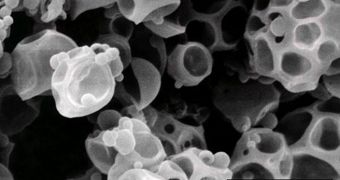Investigators from the Rice University announce important progress in their efforts of using microsponges derived from natural seaweed to create new diagnostics tools against conditions such as cancers, hearth diseases and even AIDS or HIV infection.
Scientists at the university are developing the new system as part of their Programmable Bio-Nano-Chip (PBNC) sensor. Details of the progress made thus far, as well as the new advancement, appear in the latest issue of the esteemed journal Small.
Undoubtedly, the main advantage that the new detection tool will have over existing ones will be the cost. Current clinical methods can be resource-intensive and expensive, but the microsponges could do the exact same thing cheaper and more efficiently.
The research team is led by the Rice Brown-Wiess Professor in Bioengineering and Chemistry John McDevitt. He is collaborating closely with colleagues from the BioScience Research Collaborative.
PBNC could literally become a mainstream medical diagnostic tool, McDevitt believes, and so every effort is put into refining the diagnostics technology to the best possible extent. The new sensors are already being used in six independent clinical trials.
These microsponges actually have a fairly intuitive mechanism of operations. They act as biomarker traps, in that the capture the molecules that indicate the presence of various disease in a person.
The chemicals can be found in blood, saliva and other fluids, and they are easily sequestered by the seaweed derivate upon contact. The sensors are shaped like inverted pyramid-shaped funnels.
This arrangement is then installed in the heart of the PBNC, which is about the size of a credit card. In a sense, the microsponges are the heart of the detector.
The development of the new technology will be detailed between February 17-21 at the annual meeting of the American Association for the Advancement of Science (AAAS), in Washington, DC.
“When a fluid sample is put into the disposable device, microfluidic channels direct it to the sponges, which are infused with antibodies that detect and capture specific biomarkers,” the Rice team says.
“Once captured, they can be analyzed within minutes with a sophisticated microscope and computer built into a portable, toaster-sized reader,” it goes on to explains.
The investigation was made possible by grant money provided through the National Institute of Dental and Craniofacial Research, a part of the US National Institutes of Health (NIH).

 14 DAY TRIAL //
14 DAY TRIAL //